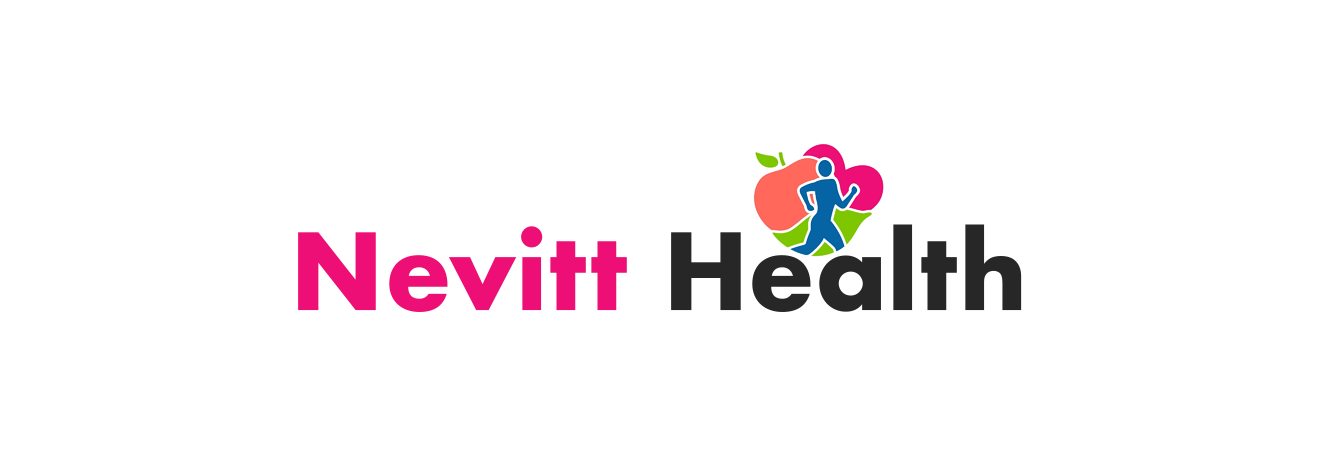Defining Birth Injuries
Birth injuries occur when a baby is harmed during the birthing process. These injuries can happen for a variety of reasons, including complications during delivery or medical errors. Some common types of birth injuries include bruises, broken bones, or nerve damage. In severe cases, birth injuries can lead to long-term conditions such as cerebral palsy. Understanding these injuries is crucial because they can have lasting effects on a child’s life.
Overview of Cerebral Palsy
Cerebral palsy is a disorder that affects a person’s ability to move and maintain balance. It’s caused by abnormal development or damage to parts of the brain that control movement. This condition can vary in severity, with some individuals experiencing mild symptoms and others facing significant physical challenges. Symptoms might include difficulty walking, poor coordination, and muscle stiffness. Cerebral palsy is often linked to injuries during childbirth, though it can also result from other factors.
The Connection Explained
The connection between birth injuries and cerebral palsy is often rooted in the lack of oxygen to the baby’s brain during delivery. When oxygen is cut off, even for a short time, it can lead to damage that results in cerebral palsy. This condition is one of the most common and serious outcomes of birth injuries. Other factors such as infections during pregnancy or premature birth can also increase the risk. Recognizing the link between these birth-related complications and cerebral palsy is essential for both prevention and treatment.
Common Causes of Birth Injuries Leading to Cerebral Palsy
Oxygen Deprivation During Childbirth
Oxygen deprivation to a baby’s brain is a leading cause of cerebral palsy. This can happen when there are complications during childbirth that interrupt the flow of oxygen. For example, if the umbilical cord is compressed or prolapsed, or if the placenta detaches prematurely, the baby may not receive the necessary oxygen. In such scenarios, quick medical intervention is crucial. Delays in performing emergency procedures, like a C-section, can increase the risk of brain damage.
Impact of Maternal Infections
Maternal infections during pregnancy can significantly impact the baby’s brain development. Infections like rubella, cytomegalovirus, and toxoplasmosis are particularly concerning. These infections can lead to inflammation, which might damage the baby’s developing brain. It’s essential for expecting mothers to receive proper prenatal care to monitor and manage any infections promptly.
Complications from Premature Birth
Premature babies are at a higher risk for cerebral palsy due to their underdeveloped organs, especially the brain. They are more susceptible to brain hemorrhages and conditions like periventricular leukomalacia (PVL), which involve the death of small areas of brain tissue. Caring for premature infants often requires specialized medical attention to mitigate these risks.
Medical Malpractice and Its Role in Cerebral Palsy Cases
Identifying Medical Errors
Medical malpractice is a serious issue that can have devastating consequences. In the context of childbirth, it can lead to conditions like cerebral palsy. Medical errors during delivery might include failing to detect or properly treat infections in the mother or baby, delaying necessary cesarean sections, or misusing delivery tools like forceps or vacuum extractors. These mistakes can result in significant harm, sometimes leading to cerebral palsy. When healthcare providers overlook signs of fetal distress, such as abnormal heart rates or oxygen loss, the results can be catastrophic. Understanding these errors is crucial for preventing future incidents.
Legal Implications of Malpractice
When medical negligence results in cerebral palsy, families have the right to seek legal recourse. Filing a lawsuit can help families gain compensation to cover medical expenses and improve their child’s quality of life. The legal process involves proving that the healthcare provider’s negligence directly caused the condition. This can be complex, requiring expert testimony and detailed evidence. Legal assistance is vital to navigate these challenges and hold the responsible parties accountable. Families affected by such negligence should be aware of their rights and the potential for financial compensation.
Case Studies of Malpractice
Examining past cases of medical malpractice can provide insight into how these errors occur and their impact on families. For instance, there have been cases where delayed cesarean sections or improper use of delivery tools led to cerebral palsy. Each case highlights the importance of timely and appropriate medical intervention. By studying these incidents, healthcare providers can learn from past mistakes, and families can understand the importance of pursuing justice. These case studies also underscore the need for accountability in the healthcare system, ensuring that similar mistakes are not repeated.
Preventative Measures to Reduce Birth Injuries
Importance of Prenatal Care
Prenatal care is a cornerstone in minimizing the risk of birth injuries. Regular checkups with a qualified obstetrician can help monitor both the mother’s and the baby’s health throughout pregnancy. This monitoring can identify potential risks early, allowing for timely interventions. Consistent prenatal visits ensure that any complications are managed effectively, reducing the likelihood of issues during childbirth. Expectant mothers are encouraged to maintain a healthy lifestyle, including a balanced diet and appropriate exercise, to support fetal development.
Monitoring During Labor
Close monitoring during labor is essential to detect any signs of distress in the mother or baby. Healthcare providers should be vigilant in observing fetal heart rates and the progress of labor to quickly identify potential problems. Technologies such as electronic fetal monitoring can provide real-time insights, helping medical teams make informed decisions. In some cases, the use of assisted delivery techniques, like forceps or vacuum extractors, might be necessary. However, these should be used cautiously to avoid injuries, as improper use can lead to complications like brachial plexus injuries.
Emergency Interventions
Despite best efforts, emergencies can arise during childbirth. Being prepared for such situations can make a significant difference. Hospitals should have protocols in place for rapid response to complications such as oxygen deprivation or abnormal fetal positioning. Training medical staff to handle emergencies efficiently can reduce the risk of severe birth injuries. In some instances, swift surgical intervention may be required to prevent long-term damage. It’s crucial that healthcare providers are equipped to make quick decisions to protect both the mother and the child. For more information on how birth injuries can be prevented, explore strategies that focus on risk identification and appropriate care.
Legal Recourse for Families Affected by Birth Injuries
Filing a Birth Injury Lawsuit
Families facing the aftermath of a birth injury often find themselves in a challenging situation. Filing a lawsuit can be a crucial step in seeking justice and compensation. The process typically involves gathering evidence, consulting with legal professionals, and understanding the specific laws governing medical malpractice in your area. Key steps include:
- Documenting all medical records and communications related to the birth.
- Consulting with a specialized attorney who understands birth injury cases.
- Filing the lawsuit within the statute of limitations, which varies by state.
Understanding Compensation Claims
Understanding the nuances of compensation claims can be daunting. Compensation can cover a wide range of expenses, including medical costs, therapy, and long-term care. Families need to be aware of the types of damages they can claim:
- Economic Damages: These cover tangible costs like medical bills and rehabilitation.
- Non-Economic Damages: Compensation for pain, suffering, and emotional distress.
- Punitive Damages: In cases of gross negligence, additional compensation may be awarded.
Choosing the Right Legal Representation
Selecting the right legal representation is vital for a successful outcome. Families should look for attorneys with experience in birth injury cases and a track record of success. Considerations when choosing an attorney include:
- Experience and specialization in birth injury and medical malpractice cases.
- Client testimonials and success stories.
- Availability for consultation and communication throughout the legal process.
For families seeking justice, understanding their legal options and having the right support can make a significant difference in their journey toward healing and closure. Additionally, families can take legal action against manufacturers of unsafe baby products to seek compensation for injuries their child has suffered.
Long-term Impacts of Cerebral Palsy on Children and Families
Physical and Cognitive Challenges
Children with cerebral palsy face a range of physical challenges that can vary significantly in severity. Muscle stiffness, also known as spasticity, and involuntary movements are common issues. These challenges can affect mobility and coordination, making everyday activities like walking or grasping objects difficult. Over time, these physical challenges can lead to joint problems and muscle contractures, which may require ongoing therapy and, in some cases, surgical interventions.
Cognitively, some children with cerebral palsy may experience difficulties in learning and communication. This can impact their educational journey, necessitating specialized learning plans and support systems within the school environment. Early intervention and tailored educational programs are crucial in helping these children reach their full potential.
Emotional and Financial Strain
The emotional impact on families is profound. Parents often experience a range of emotions, from grief and frustration to hope and determination. The constant care required can be exhausting, leading to caregiver burnout. It’s essential for families to seek emotional support through counseling or support groups to navigate these challenges.
Financially, the cost of managing cerebral palsy can be overwhelming. From medical treatments and therapies to adaptive equipment and home modifications, expenses can quickly add up. Many families find themselves seeking financial assistance or exploring insurance and financial assistance programs to manage these costs.
Support Systems and Resources
Building a robust support system is vital for families affected by cerebral palsy. This includes connecting with other families facing similar challenges, accessing community resources, and engaging with healthcare providers who specialize in cerebral palsy care. Support groups and online communities offer a platform for sharing experiences and advice.
Healthcare providers play a pivotal role in offering guidance on the latest treatment options and assistive technologies. Regular check-ups and consultations can help manage symptoms and improve quality of life. Additionally, exploring innovations in treatment and management can provide new avenues for enhancing mobility and independence.
Innovations in Treatment and Management of Cerebral Palsy
Advancements in Medical Therapies
In recent years, the medical field has seen significant advancements in therapies for cerebral palsy, offering new hope for individuals affected by this condition. Physical therapy remains a cornerstone, helping to enhance motor function and flexibility. Occupational therapy complements this by focusing on fine motor skills, enabling children to gain independence in daily activities. Speech therapy is also crucial, especially for those with communication challenges, helping to improve language skills and swallowing functions.
Moreover, medications play a vital role in managing symptoms such as muscle spasticity and seizures. In some cases, surgical interventions are necessary to correct physical abnormalities and improve mobility. These surgeries often target muscle and tendon lengthening to alleviate stiffness and enhance movement.
Role of Assistive Technologies
Assistive technologies have transformed the management of cerebral palsy, making everyday tasks more accessible. Devices such as communication boards and specialized computers help those with speech difficulties express themselves more effectively. Mobility aids, including walkers and wheelchairs, provide greater freedom of movement.
Emerging technologies like robotic therapy and functional electrical stimulation are also gaining traction. These innovations use robotics to assist with movement training, promoting muscle strength and coordination. Functional electrical stimulation involves electrical impulses to stimulate muscle contractions, aiding in muscle rehabilitation.
Importance of Early Intervention
Early intervention is crucial in the management of cerebral palsy. By identifying and addressing issues early on, children can achieve better outcomes in their development. Early intervention programs focus on providing therapies that enhance motor skills, cognitive abilities, and social interactions.
Parents and caregivers are encouraged to engage in these programs as soon as a diagnosis is made. The goal is to create a supportive environment that fosters growth and development, allowing children to reach their full potential. Collaboration between healthcare providers, therapists, and families is essential to tailor interventions to each child’s unique needs.
For those exploring cutting-edge treatments, Verita Neuro offers advanced stem cell treatment for cerebral palsy, aiming to enhance motor function and overall quality of life. Additionally, stem cell therapy provides a groundbreaking approach by addressing underlying causes and encouraging brain cell regeneration.
The Role of Healthcare Providers in Preventing Birth Injuries
Healthcare providers are central to minimizing the risk of birth injuries, ensuring both mothers and infants experience a safe childbirth. Their proactive engagement and vigilance can significantly impact outcomes.
Training and Education for Medical Staff
Continuous education and training for medical staff are vital. Regular updates on the latest obstetric practices ensure that healthcare providers are well-equipped to handle various childbirth scenarios. Training programs often include simulations of emergency situations, helping medical teams react swiftly and appropriately when complications arise.
Implementing Safety Protocols
Safety protocols are essential in every delivery room. These guidelines help standardize procedures, reducing the chances of errors. Key protocols include:
- Regular monitoring of fetal heart rates to detect distress early.
- Adherence to guidelines on the use of birthing tools like forceps and vacuum extractors.
- Protocols for managing prolonged labor to prevent complications.
Continuous Monitoring and Evaluation
Constant monitoring of both mother and baby during labor is crucial. This involves checking vital signs and fetal positions regularly. Continuous evaluation allows healthcare providers to make informed decisions quickly, potentially preventing injuries. Moreover, post-delivery monitoring ensures any arising issues are addressed promptly, safeguarding the health of both mother and child.
In summary, the role of healthcare providers in preventing birth injuries is multifaceted, involving education, protocol implementation, and vigilant monitoring. Their efforts are fundamental in creating a safer birthing environment for all involved.
Understanding the Financial Burden of Cerebral Palsy
Caring for a child with cerebral palsy (CP) isn’t just emotionally challenging; it also brings significant financial stress. The lifetime cost of managing CP can exceed $1.5 million, according to the CDC. This staggering figure encompasses various expenses that families must navigate.
Cost of Medical Care and Therapies
Medical care for CP involves a wide array of treatments and therapies. Regular visits to specialists, ongoing physical therapy, and potential surgeries contribute to the financial load.
- Direct Medical Costs: These include hospital stays, doctor visits, and prescription medications. On average, families might face about $93,942 in direct medical expenses.
- Therapy and Rehabilitation: Physical, occupational, and speech therapies are essential for improving the quality of life but come with a hefty price tag.
- Assistive Devices: Equipment such as wheelchairs, braces, and communication devices are necessary but often expensive.
Insurance and Financial Assistance
Navigating insurance policies can be daunting. Many families find that standard health insurance doesn’t cover all necessary treatments or devices. However, there are avenues for financial assistance:
- Public Programs: Government-sponsored programs can offer some relief by covering certain medical expenses.
- Non-Profit Organizations: Numerous organizations provide grants and financial aid specifically for families affected by CP.
- Legal Compensation: In cases where CP is due to medical malpractice, families may pursue financial compensation through legal channels.
Planning for Long-term Care
Long-term care planning is crucial for families managing CP. It involves anticipating future needs and ensuring financial stability:
- Creating a Financial Plan: Working with financial advisors to set up trusts or savings accounts can help manage future expenses.
- Exploring Lifetime Care Options: Some families may need to consider residential care facilities as their child ages.
- Securing Legal Guardianship: As children with CP become adults, legal guardianship might be necessary to continue managing their care and finances.
Understanding these financial aspects is essential for families to ensure they can provide the best possible care for their loved ones with cerebral palsy.
The Importance of Early Diagnosis and Intervention
Recognizing Early Symptoms
Identifying the early signs of cerebral palsy is a game-changer for families. Babies might not hit developmental milestones like rolling over, sitting, or walking at the expected times. Some may show unusual muscle tone, either too floppy or too stiff. Others might struggle with coordination or have involuntary movements. Spotting these signs early can lead to a quicker diagnosis and a more tailored intervention plan. It’s crucial for parents and caregivers to keep an eye on these developmental markers and consult healthcare professionals if there are any concerns.
Benefits of Early Intervention Programs
Early intervention can make a significant difference in a child’s life. These programs are designed to support children from birth to age three, a period when the brain is most adaptable. Early intervention for children with cerebral palsy enhances motor function, prevents complications, and fosters cognitive and social development. Families also receive essential support, helping them navigate the challenges of raising a child with cerebral palsy. The earlier these interventions start, the better the outcomes for the child.
Collaborative Care Approaches
A team-based approach is often the most effective way to manage cerebral palsy. This involves a mix of healthcare professionals, including doctors, therapists, and educators, working together to create a comprehensive care plan. Each specialist brings their expertise to the table, ensuring that the child’s physical, cognitive, and emotional needs are met. Early diagnosis of cerebral palsy is crucial as children’s brains are more adaptable at a young age, allowing for better intervention and support. This collaborative approach not only benefits the child but also provides guidance and reassurance to families as they navigate these complex needs.
Exploring the Psychological Impact on Families
Coping with Diagnosis
When a family receives a cerebral palsy diagnosis for their child, it can be an overwhelming experience. The emotional rollercoaster that follows often includes denial, anger, and sadness. Parents may find themselves questioning their actions during pregnancy or childbirth, searching for answers. Support groups and counseling can be vital in helping families come to terms with the diagnosis and find a path forward.
Accessing Mental Health Support
Mental health support is crucial for families dealing with the challenges posed by cerebral palsy. Therapists specializing in chronic illness can provide strategies to manage stress and anxiety. Families are encouraged to seek professional help not only for their children but also for themselves. Regular therapy sessions can offer a safe space to express emotions and develop coping mechanisms.
Building a Supportive Community
Creating a network of support is essential for families affected by cerebral palsy. Engaging with other families facing similar challenges can offer comfort and practical advice. Consider joining local or online support groups where experiences and resources are shared. These communities can become a lifeline, providing both emotional support and valuable information about managing cerebral palsy.
For families with children who have cerebral palsy, the emotional challenges can be significant. These challenges often affect family relationships, leading to a need for strengthened emotional support. Additionally, families with children who have higher GMFCS levels may face increased psychosocial and economic burdens, making it important to address these issues proactively economic burdens.
Global Perspectives on Birth Injuries and Cerebral Palsy
Comparative Statistics Worldwide
Understanding the global landscape of cerebral palsy (CP) and birth injuries reveals a complex picture. Cerebral palsy affects approximately 8.1 million children under five worldwide, representing about 1.2% of that age group. In high-income countries, the prevalence is around 1.6 per 1000 live births, though this number can vary significantly across different regions. Factors such as healthcare access, quality of prenatal care, and socioeconomic conditions play a crucial role in these variations.
International Treatment Approaches
Different countries have developed varied strategies to manage and treat cerebral palsy. Some nations focus heavily on early intervention programs, while others emphasize the use of advanced medical therapies and assistive technologies. For instance, Scandinavian countries are known for their comprehensive healthcare systems that provide robust support for children with CP. Meanwhile, in some developing regions, access to basic medical care remains a challenge, impacting the availability and effectiveness of treatment options.
Global Initiatives for Prevention
Efforts to prevent birth injuries that may lead to cerebral palsy are ongoing worldwide. Organizations and governments are investing in research and public health initiatives aimed at reducing the incidence of birth-related complications. Key strategies include improving prenatal care, enhancing maternal health education, and implementing safety protocols during childbirth. These initiatives underscore the importance of collaborative efforts in tackling the complex issues surrounding birth injuries and cerebral palsy on a global scale.
Links










